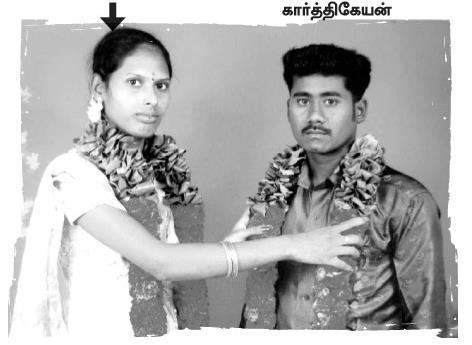Rohan Arthur
 Hindustani vocalist Kishori Amonkar passed away on 3rd April, 2017.
Hindustani vocalist Kishori Amonkar passed away on 3rd April, 2017.
Kishori Amonkar is remembered for her contribution to Hindustani classical music, and her passing was mourned in popular news media as a great loss to the music community. This article is not about the musicality and vocal abilities of Kishori: there are plenty of other articles for this. There are also other articles and books about ‘women’, ‘migration’, ‘glory days of Hindustani Music’, etc. What they all mention, but also inexplicably missed to examine, was the context and circumstances that her career was inevitably ensconced in, and her valiant battles against the social order of caste hierarchy.
At this juncture (if not earlier), we should pause to ask ourselves these questions:
1. Who was Kishori Amonkar?
2. What is the role of Hindustani Classical Music in her life? Or, what was her influence on
Hindustani music (while still leaving the technicalities of music aside, because those matters, as mentioned earlier, have already been discussed in other writings)?
Kishori was the daughter of another noted vocalist, Mogubai Kurdikar. Mogu is considered a giant in the Hindustani Music tradition. She was born in the kalavant caste of Goa, which is today listed among the Other Backward Class (OBC).
Who were the kalavants?
The kalavants were a caste that was appointed as temple attendants, with particular duties of entertainment. In the geographical area of what is today Goa, and south western Maharashtra, it fell upon the kalavants to fulfill, among other things, this most cruel duty: so cruel that even the euphemistic job description of ‘a girl/woman dedicated to serving the gods’ sounds like a most atrocious and tyrannous demand on a human being. When we find out the reality of these women’s experiences (beyond the bogus god-serving), the mind boggles at the heinous crimes that were heaped upon them for generations by members of the aristocratic and priestly castes. It was nothing less than the most abject slavery of girls and women, to serve as entertainment in the everyday goings on of the high caste society.
We must pause here to examine a word that undoubtedly would have cropped up in the mind of the reader: Devadasi. The term is supposed to denote a woman who is dedicated to the service of a temple god. There is no over-arching umbrella caste for the ‘Devadasi’. It is a term that was recently manufactured to suit the whims of the Brahmanical academia. True, similar practices are seen in various regions of India at various times in history, some even today. However, there is no proven common genesis to this, no single attributable phenomenon. The ‘devadasi’ of Andhra Pradesh is quite a different phenomenon from the ‘devadasi’ of Goa. In light of such knowledge, we must always treat the usage of the term ‘devadasi’ with suspicion.
The region that is Goa today saw a social disruption with the Portuguese invasion. The invasion was not in a single event. The Portuguese influence slowly reached inland from their first conquest of the ports. The kalavant communities took advantage of this period of confusion, when the existing power structure was temporarily shaken, to consolidate and form what is known today as the ‘Gomantak Maratha Samaj’. The kalavants sought to extricate themselves from the slavery under the caste system. This consolidation did not come easily. There were violent repercussions from other members of society, who were enraged at the audacity on display. How could this lowly caste of entertainers dare to create an identity separate from the fold of Brahmanism!? There were many physical attacksi (we must also assume here, the emotional and social attacks, which are prime weapons of choice for Brahmanical India)ii. The emancipation was wrought by the kalavants themselves. They fought to bring themselves out from the hopeless quagmire of caste. The Samaj was thus created, and many artistes migrated out of Goa, to other parts of India (mostly to Bombay).

For the kalavants, or in other words, members of the Gomantak Maratha Samaj, progress has come relatively swiftly, but this progress must always be seen in light of the many hard-fought battles waged and personal setbacks suffered by them. There are, today, many noted musicians, entrepreneurs and politicians who hail from this community. They seek to reject and discard their humiliating past, and to consolidate and look forward to progress as a community. Education and financial stability has brought about a great deal of change. However, as we shall see, caste is something that will not go away easily. It clings to you, and manifests itself in various walks of life.
The kalavants’ defined calling was music and dance. By Brahmanical injunction, this was their expertise. Many artistes found relative success in the entertainment industries. The success was, however, hard-fought and bittersweet. The entertainment industry was controlled by the elite upper castes. How could they unquestioningly admit someone from a lower caste into their fold? No: The kalavants’ divine duty was to entertain, and not to deem themselves in any way equal to the elite. This musical entertainment, today, is Hindustani and Carnatic ‘Classical’ music: supposedly the epitome of purity and perfection, in fact, even a form of worship of the gods of the Brahmins! On the other end of the spectrum, there is Bollywood, which is dominated by Khans and Kapoors. What space is available within this empire for a descendent of a ‘devadasi’?
~
FW Gaisberg: “All the female singers were of course from the caste of public women, and in those days it was practically impossible to record the voice of a respectable woman. The songs and dances were passed by word of mouth from mother to daughter. They began public appearances at the age of ten or twelve years. But recording expenses were heavy, since most of the artists had to be trained over long periods before they developed into acceptable gramophone singers”.iii
~
Gangubai Hangal: “I remember singing for the Belgaum Congress session which was attended by Gandhiji, my only paranoia throughout the programme was that I would be asked to eat my food separately.”iiv
~
The story of Mogubai
For someone whose life and ‘career’ is so divinely pre-ordained in music and dance, Mogu did not have it easy. She had to suffer many setbacks, fight most inhuman battles just to get her music education. After spending her childhood in Sangli, running from pillar to post to get whatever meagre education she could in kathak and gayaki, things came crashing down around her with the demise of her mother at a young age. Mogu persisted in her fierce pursuit of the art for several years, all the while being handed from one traveling theatre company to the other. Finally, a breakthrough came for her when she was noticed for her vocal abilities by a famous teacher, Alladiya Khan. Her mother’s dreams that Mogu would someday stand among the greats in Indian musical tradition seemed to have come to a point of fruition, when suddenly, the teacher announced that he had to move to Bombay. Did this deter Mogubai? No! She followed her teacher to Bombay and continued her education, until the jealous sons of aristocrats ensured that her tuitions were ended. What followed was another phase of running from pillar to post, trying to find a suitable teacher that would help Mogu to realize her dreams. The struggle continued, until Mogu finally ‘makes it’ into the elite music ‘scene’ in Bombay. She is finally famous, and much talked about in all the music ‘circles’.

Does this bring an end to Mogubai’s trials? She had achieved her dream of being counted among the greatest exponents of Hindustani music. But how was she accepted? What was her role in this milieu of ‘classical’ music? Mogu was forced to travel ‘third class’, and was forced to stay in shoddy accommodations, in stark contrast to the other upper caste performers of her time. She was forced to eat separately; she was ostracized and subjected to the most violent upper caste male gaze. This oppressive treatment was not only because Mogubai was a woman in a male-dominated industry. There were many other upper caste women artists at the same time, earning much more than Mogubai. It was, in fact, Mogu’s caste identity that inevitably followed her throughout her illustrious career as a dark cloud. It was a constant reminder, the alarm clock that was set by the Brahman of long ago. Mogubai’s career and success must be seen in this light. We must understand that the success was not a result of acceptance from the Brahmanical forces, but an assertion from Mogubai. That dark cloud must be exposed starkly to show the struggles that lower caste artists go through, and how the odds are stacked against them like a mountain.
THAT Mogubai’s daughter is Kishori.
Kishori was brought up by her single mother (father died when Kishori was very young), in an environment of ‘counter tradition’. The kalavant community that Kishori was born into now had an anti-caste foundation, an open challenge to the existing social order. The artists had demonstrated that they could be successful despite being beyond of the pale of the caste order. Fledgling careers of singers, actors and dancers were sprouting up around young Kishori. This did not in any way mean that the Brahmanical empire allowed them any leeway or concessions. Every inch of progress had been hard fought, and this fight has to be seen as an integral part of Kishori’s body of work. At every step, this or that artist was broken down and dragged back into a life of slavery. Kishori’s world was a most inhuman environment, and for her to have beaten all those odds is indeed a reason to celebrate the life and work of this most remarkable woman.
The Hindustani Music ‘fraternity’ is organized into gharanas. A Gharana is understood to be a school of music. Each gharana has its own styles, and its own rules. The strict hierarchical organization has a guru at the top, with other gurus officiating ‘below’ him. The guru is regarded as a divine being, and venerated with utmost fear and fervor. The appointment of the guru is by either lineage or scholarship. In cases where appointments happen outside of lineage, it is only after the candidate has demonstrated ‘merit’ and ‘purity’.
Almost every article reports that Kishori Amonkar was an ‘exponent of the Jaipur gharana’. What they miss to emphasize is that Kishori was against such ideas of ritual purity and social exclusivity. In an interview with the Indian Express, Kishori says:
“There is nothing called a gharana. There is only music. It has been bound in these gharanas and that is like dividing music into specific castes. One should not teach the students the limits of this art. There are none. But one has to understand the grammar. Which is why, one is taught the alankaar, the ragas”v.
Many mainstream sources report that she was ‘strict’ and ‘temperamental’. This is because of instances where Kishori is known to have rebuked some audience member for disturbing her, or in some cases has refused to go ahead with a performance or an interview because she thought the audience was badly behaved. Who are the audience at these concert halls? It isn’t really a far cry from the temple performances of old, with a gathering of upper caste men to ogle at a lower caste performer. Aren’t they, by their own purification, a majority representation of upper castes? Wouldn’t it rankle, then, to see the performer asserting herself, and making conditions from this audience who are no longer merely ‘patrons’? Mustn’t we examine Kishori’s assertion in this context? When an upper caste man or woman actor refuses performances or interviews, will these rags swoop down on them too, and swiftly label them as ‘strict’ or ‘temperamental’? Why this eagerness to demonize Kishori Amonkar, or for that matter, Lata Mangeshkar (yes, another artist from the Kalavant ‘lineage’)?
These small instances show that Kishori was in a lifetime battle against the social orders. She lived a life not only in pursuit of musical excellence, but also of assertion of her identity. She is known to have rejected the idea of ever receiving the Bharat Ratna, because the same was awarded to Sachin Tendulkar! What a bold statement, what clear assertion! For a country and a populace that is known for verbally attacking anyone who does not know Tendulkar, or who criticizes him, this statement was a demonstration of Kishori Amonkar’s rejection of and contempt for the Indian social order.
I am not making any of this up. One can easily do a google search, and piece together the bits that contribute to her biography from various shuddh ‘purified’ classical music blogs.
A further search will also reveal that there have been several (not many) female classical vocalists. Rani Vijaya Devi was the princess of Mysore, and a Carnatic vocalist. Girija Devi was born to a Zamindar in a Bhumihar family. She was at first forbidden from performing, but she fought this battle and became a well known Hindustani vocalist. Brahmo Samaj leader Keshab Chandra Sen’s daughter, Naina Devi was a Hindustani Vocalist. She married a prince of Kapurthala State, and was thence forbidden from performing. Sidheshwari Devi was born into a lower caste family, but was adopted by an upper caste teacher. Surely, they faced hardships too, but those took the form of not being allowed to perform. Upper caste households were strict in their stance that upper caste women were not allowed to perform, because this was the duty of the lower caste women. Who made these rules? Upper caste men. And why not? Who would want to voluntarily subject their daughters to the violent malicious male gaze? The same Brahmanical empire that enslaves ‘lower caste’ human, enslaves the ‘upper caste’ woman too.
With the death of Kishori Amonkar, we have lost a great warrior indeed. The news media and social media have probably finished with their shallow eulogies. In pursuit of our Ambedkarite struggle, we must continue to fight and break the Brahmanical Indian Empire. As part of this, we will continue to look at the lives of our artists, and celebrate them for what they truly were. The fetishization and attempted ‘purification’ of artists continues with a long list: who were the singers and dancers and actresses of yesteryear, that we so romantically idolize today? What was their contribution, and how has Brahmanical society attempted to usurp their contributions, and even their very personalities? I heard of this term yesterday: Historical Erasure. If it is new to you too, please go look it up. Why was Kishori Amonkar’s caste erased in all the eulogies? In Sruthi’s article we see how murdered OBC women were wrongly called as ‘Dalits’vi . Only the ‘purified’ identities are valourized. The only chance for a person coming from a lower caste to get any recognition seems to be by erasing their caste identity. Remember, the identity was first thrust upon them by Brahmin mandate. Why was Gangubai Hangal not allowed to dine with upper castes when she was alive, but now there is a street named after in the Brahmin headquarters of Bangalore? Why is caste underplayed in life and even in death? Very strange, these upper caste machinations. Another aspect that emerges from the analysis is the appropriation, nay, the erasure of OBC identity. Ever since Mandal, there is a lot of (positive and negative) discourse about empowerment of OBCs. This definitely does not bode well for Brahminical India. A stark binary of Brahmin-Dalit is a lesser discomfort than a real picture of the caste carnage that is the Indian Empire. The reticence of the news media to recognize Kishori Amonkar’s caste identity, is, surely a vile Kamandal move?
I mentioned Lata Mangeshkar earlier. Or, why is actress Rekha considered to be rude or distant? Why does the media make delicious speculations about the men in their lives (or the lack of men in their lives), in a manner wholly different from a case of an upper caste artist? Why is excellence emphasized and expected of them, but the upper caste Kapoors and Khans are lauded for their mediocrity? Many questions, but the answers are very few and most inconvenient. Better to talk about ragas and gharanas instead of getting into controversies, no?
~
Notes:
i. Anjali Arondekar, In the Absence of Reliable Ghosts: Sexuality, Historiography, South Asia
ii. Arondekar mentions an autobiographical account called Mi Kon by Rajaram Rangoji Paigankar, of the kalavant caste
iii. FW Gaisberg, Music on Record
iv. Abantika Ghosh, Celebrating the first women in the groove, Times of India April 8 2010
v. http://indianexpress.com/article/lifestyle/art-and-culture/the-loneliness-of-kishori-amonkar/
vi. Sruthi Herbert, Over Their Dead Bodies: The New Politics of Protests (http://www.dalitweb.org/?p=2613)
Further reading
1. Over Their Dead Bodies: The New Politics of Protests (http://www.dalitweb.org/?p=2613)
2. Sanskritization or Appropriation : Caste and Gender in “Indian” Music and Dance (http://www.dalitweb.org/?p=2499)
~~~
Rohan Arthur works in an MNC in Bangalore. He is interested in music, history and photography.
Pictures courtesy: the internet.










